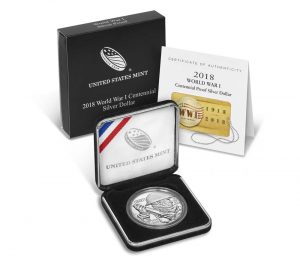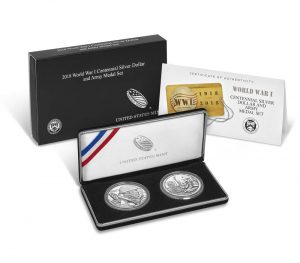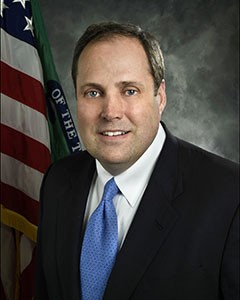Weekly World Numismatic News for September 12, 2021
According to Coin World, the coins have several issues, but the primary problem is that the U.S. Mint has not shipped any coins. How can you buy a coin that the manufacturer has not shipped?
Another scam you can find on eBay is that some sellers are offering MS-70 coins for “pre-sale.” How can a seller sell a coin graded MS-70 that has not been released or graded by the grading service? How will these sellers guarantee that the coins they receive from the U.S. Mint will grade MS-70 unless they pay off the grading service?
I know many collectors want to add these coins to their collection. You may want to wait until the coins are issued, the grading services see the coins in hand, and the suckers get out of the market. If you want to see what I mean, look at the 25th Anniversary American Silver Eagle Set. After they were released, the prices climbed to $500-700 with limited availability. Although the price numbers have not changed, the value of $500 is less than in 2011 and is generally available.
And now the news…
 → Read more at smithsonianmag.com
→ Read more at smithsonianmag.com
 → Read more at indianexpress.com
→ Read more at indianexpress.com
Weekly World Numismatic News for January 14, 2018
One of my favorite quotes is from philosopher, essayist, poet, and novelist George Santayana who wrote, “Those who cannot remember the past are condemned to repeat it.” I was reminded about this quote while reading the news and stumbling over a story “Stamp Out the Sexist Legacy of the Dollar Coin” by Addison Nugent.
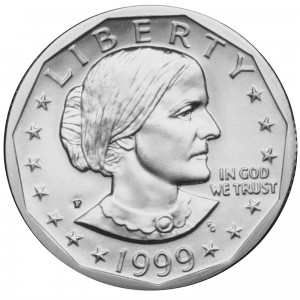
The Susan B. Anthony dollar coin was introduced in 1979 with much fanfare for being the first coin to honor a woman. The coin was a failure because it was confused with a quarter
Nugent complains that the design of the coins and the fact that they use the visage of a female as the reason these dollar coins have not been successful. What Nugent failed to do is learn from history and the facts.
The failure of the Susan B. Anthony dollar was not because the coin depicted a woman or was called the “Agony Dollars” (I had never heard this term before reading the article). The coin failed because of the decision to make it too close to the size to the Washington quarter, had reeded edges like the Washington quarter, and on a simple glance was consistently confused with the Washington quarter. The confusion made the coin very unpopular in the United States but continues to find usage in other countries whose currency is based on the U.S. dollar.
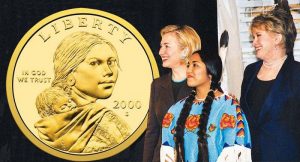
The unveiling of the Sacagawea Dollar design at the White House with (L-R) First Lady Hillary Clinton, Sacagawea Model Randy’L He-dow Teton, and Designer Glenna Goodacre.
Nugent then wrongly notes that “Sacagawea coins were pulled from circulation from 2002-2008 and from 2012 onward.” I do not know where she gets her facts from, but the reality is that the U.S. Mint, Department of the Treasury, and Federal Reserve does not recall paper currency or coins from circulation. What happens is that when there is no demand for a coin the Federal Reserve stops ordering them from the U.S. Mint.
The reason that the dollar coin does not circulate is not that it depicts a woman. The dollar coin does not circulate because the public has chosen paper over a coin. Even though studies have shown that the public can adopt and that there would be a savings to the government if the paper dollar was no longer printed (see the Government Accountability report GAO-13-164T), Congress does not have the intestinal fortitude to eliminate the paper dollar.
To add insult to the facts, Nugent does not take into consideration that the Sacagawea dollar was changed starting in 2009 to the Native American $1 Coin Program. While Sacagawea continues to appear on the obverse, the reverse honors Native American history. The last I looked the Native American population has undergone a significant negative history in the United States.
Another fact that Nugent does not acknowledge is that even though the U.S. Mint does not produce these coins for circulation they are produced for the collector market. In addition to being included in mint and proof sets, there have been special sets created with Native American coin honoring their accomplishments. Aside from being able to purchase these coins at face value in any U.S. Mint and Bureau of Engraving and Printing facility open to the public, you can also go to any bank and request they obtain a roll for you from the Federal Reserve.
Nugent’s complaints also do not consider the appearance of women and minorities on commemorative coins or that the first woman to appear on circulating currency was Martha Washington. Our first First Lady’s portrait appeared on the $1 Silver Certificate between 1891 and 1896.Although I agree with Nugent that United States coins and currency should be more diverse and I am in favor of removing Andrew Jackson, who was responsible for the Trail of Tears, from the $20 note, it is difficult to side with any argument whose purpose is based on factual errors.
And now the news…
Popular online magazine Atlas Obscura recently became the latest to probe the question of how an 11th century Viking penny came to rest on the coast of Maine. In the decades since the 1957 discovery by amateur archaeologists, it’s been denounced as a hoax, validated by scholars, denounced as a hoax again and — as recently as this past November — validated by scholars again.  → Read more at thinkmaine.bangordailynews.com
→ Read more at thinkmaine.bangordailynews.com
A similar coin sold for more than £4,000 in a 2011 auction, but Jason has gone down the correct route of declaring it as treasure  → Read more at plymouthherald.co.uk
→ Read more at plymouthherald.co.uk
The U.S. dollar coin has been the only American currency to regularly feature women. With these leading ladies now ousted, it's time to toss the coin.  → Read more at ozy.com
→ Read more at ozy.com
The United Kingdom’s round pound coin will no longer be accepted as a form of payment for services and retail purchases in shops after February 28.  → Read more at iomtoday.co.im
→ Read more at iomtoday.co.im
When Eric Lawes set off for a field in Hoxne village, Suffolk on November 16, 1992, it wasn’t on a treasure hunt. The metal detector he’d received as a retirement gift was meant to find a hammer lost on the farmland.  → Read more at smithsonianmag.com
→ Read more at smithsonianmag.com
JAMES Grear started selling coins with his best mate Henry when they were just 18. The pair were fed up with working as labourers on a building site in Bristol earning up to £9 per hour and decided…  → Read more at thesun.co.uk
→ Read more at thesun.co.uk
State Police are working to find the owners of a large bicentennial medallion coin. It was recovered months ago, but no one has stepped up to claim it.  → Read more at mpnnow.com
→ Read more at mpnnow.com
Colonial Williamsburg has acquired a rare and iconic Danish abolitionist medal that commemorates a royal edict to end the slave trade. The bronze medal was struck in 1792 and is one of only a handful known to exist, according to a Colonial Williamsburg Foundation press release.  → Read more at wydaily.com
→ Read more at wydaily.com
By Baek Byung-yeul Organizers for the 2018 PyeongChang Olympics unveiled a new limited coin set for the Winter Games, Wednesday. At the building of Poongsan Corporation in Seoul, the maker of the PyeongChang Olympics commemorative bill, the organizing committee made public the new package.  → Read more at m.koreatimes.co.kr
→ Read more at m.koreatimes.co.kr
Grip the handle and turn the crank. Watch the roller turn. Wait for that clink, reach into the little door.  → Read more at stltoday.com
→ Read more at stltoday.com
Update on Ryder Nomination
Apparently, Ryder’s nomination was returned to remove the hold placed by Sen. Chuck Grassley (R-IA) in December. Grassley filed an intent to object to the nomination because “the Department of the Treasury has failed to respond to a letter I sent on September 29, 2017, to a bureau within the Department seeking documents relevant to an ongoing investigation by the Senate Committee on the Judiciary.” Grassley said that the objection was not intended to question Ryder’s credentials but as a punitive action against the Department of the Treasury for not answering his committee’s inquiry.
Ryder’s nomination was resubmitted by the President on January 8, 2018 (PN1355). As required, it was referred to the Senate Committee on Banking, Housing, and Urban Affairs. It is likely to be passed out of committee without a hearing. However, that does not mean Grassley or any other senator would not put a hold on the nomination.
Your government at work.
PN1355: David J. Ryder — Department of the Treasury
U.S. Mint Bombs on WWI Commem Sets
Of course, the U.S. Mint will sell an uncirculated and proof silver dollar that will come in their usual display cases with a Certificate of Authenticity. These are the coins that are required under the authorizing law (World War I American Veterans Centennial Commemorative Coin Act, Public Law 113-212) that were designed by LeRoy Transfield.
The U.S. Mint will also be selling five silver medals that will be issued in conjunction with the 2018 World War I Centennial Silver Dollar. Each medal, composed of 90 percent silver, pays homage to branches of the U.S. Armed Forces that were active in World War I: Army, Marine Corps, Air Service, Navy, and Coast Guard. Medal designs were announced last October. However, the U.S. Mint will only be selling the medals as part of a set with the silver dollar.
By not selling the silver medals individually or as a set, if a collector wants to add all five to a collection, it will cost $99.95 per set ($499.75 total) and will require the purchase of five commemorative silver dollars.Since there are no more surviving veterans of World War I, one can only assume that the commemorative coin and medal sets are being marketed to those that want to remember the service of those veterans. Creating these sets in this context makes sense. It does not make sense for the collector or for someone whose family did not serve in World War I or wants to just collect the medals.
This short-sightedness by the U.S. Mint may hinder potential sales of the commemorative coin whose proceeds are to benefit the United States Foundation for the Commemoration of the World Wars, an organization responsible for making sure we do not forget those who served.
With the decline in silver prices and the market interest in investing in silver at its lowest since before the Great Recession, a short-sighted decision like this will limit the sale of silver medals. This will lower the income and seigniorage the U.S. Mint will collect after seeing a decline in the sales of bullion-related products.
If the U.S. Mint cannot get this right, then maybe they should have a more broad community discussion so they can better understand the potential collector market because on this, they bombed!
Weekly World Numismatic News for January 7, 2018
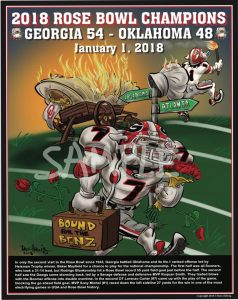
Artwork courtesy of Dave Helwig
If you are a college football fan or happened to watch the Rose Bowl last Monday, my undergraduate alma mater, the Georgia Bulldogs played a thrilling game to beat the Oklahoma Sooners 54-48 in double overtime for the right to play in the National Championship game tomorrow. The last time Georgia played in the Rose Bowl, they were crowned the 1942 National Champions.
Seventy-five years later and 37 years after Georgia’s last National Championship (in the 1981 sUGAr Bowl where I was a member of the Redcoat Marching Band), it will be a battle of Southeastern Conference Titans: Alabama v. Georgia. Also known as the Teacher v. the Student since Georgia Head Coach Kirby Smart was once the Defensive Coordinator and Assistant Head Coach under Alabama’s Nick Saban. Saban’s former assistants are 0-11 against their former boss. At some point, that streak has to end. Why not on Monday?!
Of course, my mood has been affected by Monday’s game. Even while working an antique’s show this weekend, which is why I am not in Tampa for the Florida United Numismatists (FUN) Show, it has been a wild week—and sales have been very good. But I am waiting for the game. Monday night at 8:00 PM on ESPN.
For the coin toss (I have to include some sort of numismatic content), the referees used a silver coin with the logos of the schools on both sides. The coin looked like it was silver dollar size (at least 38mm) and in an AirTite or similar holder. There was no calling “heads or tails.” The logo that showed face up won the toss. For the pre-game and overtime coin tosses, Oklahoma won the toss. But that does not matter. I want one of those coins!
Both the Rose Bowl site and the Highland Mint has what they call “dueling helmets” coins (yes, I know they are really medals). I want one of those silver coins like that was used for the coin toss. I sent a note to the people who run the Rose Bowl to ask how I can purchase one.
If you want to know what kind of mood I will be in on Tuesday, it will correspond to the outcome of the game!
And now the news…
The story of Dr Frankenstein and his cursed monster is celebrated in a new set of coins. A £2 issue will mark the 200-year anniversary of the novel by Mary Shelley which launched the modern horror genre.  → Read more at mirror.co.uk
→ Read more at mirror.co.uk
Editor's Note: View Kitco News' full 2018 outlook coverage (Kitco News) – It was a tale of two markets for gold in 2017, as prices made their biggest gains since 2010, but U.S. Mint coin sales were the weakest in a decade.  → Read more at kitco.com
→ Read more at kitco.com
Norway minted its own coins during much of the Middle Ages. But the coins didn’t always impress outsiders or even the Norwegians themselves. NTNU Associate Professor Jon Anders Risvaag specializes in medieval coins.  → Read more at sciencenordic.com
→ Read more at sciencenordic.com
Challenge coins mean different things to different troops. Senior enlisted and officers tend to place them on a desk to gloat to peers and the more junior troops slam them on the bar to see who’s buying the next round.  → Read more at wearethemighty.com
→ Read more at wearethemighty.com
The Royal Mint has unveiled the designs of four new commemorative coins to be launched this year. Based on the sales values of previous issues, these could be attractive investments. Three of the coins commemorate the centenaries of major events and organisations that have helped shape Britain, including a £2 coin that marks the 100th anniversary of the First World War Armistice — the agreement that ended fighting between the Allies and Germany.  → Read more at telegraph.co.uk
→ Read more at telegraph.co.uk
Senate Rejects Ryder
Officially, Ryder’s nomination was “[returned] to the President under the provisions of Senate Rule XXXI, paragraph 6 of the Standing Rules of the Senate.”
Senate Rule XXXI, paragraph 6 states:
However, according to the Congressional Research Service (CRS Report RL31980):
There should be no reason to reject Ryder’s nomination. Aside from being previously confirmed by the Senate, there was no issue with Ryder’s confirmation hearing. In fact, his hearing was considered a pro forma session because of his past experience with the U.S. Mint and commercial Secure Products, a company focused on developing anti-counterfeiting solutions for currency and branded products.
This is clearly a political move by McConnell who has his issues with the president while polls show the popularity of both men is declining. McConnell may be trying to calculate what it will take to hold the Senate this November in an election that is seen to be potentially contentious. McConnell ask has to consider that his term is up in 2020. If he does not retire, he would have to run alongside the president. It might help McConnell to poke the president in the eye when he has the chance.
It has been seven years since Edmund Moy resigned as Director of the U.S. Mint. Since January 2011, there have been three nominations that the Senate has not considered (Bibiana Boerio & Rhett Jeppson by Obama and currently Ryder). At this rate, will anyone accept a nomination given the Senate’s record of inaction? Or will the U.S. Mint have to accept a less than optimal candidate because nobody else will take the job?
Gallery of Rejected Nominees to be Director of the U.S. Mint
- Bibiana Boerio was nominated in Sept 2010 but never acted on by the Senate.
- Rhett Jeppson was nominated in July 2015 and even had a hearing, but his nomination was not acted on in the Senate.
- David J. Ryder, Director of the U.S. Mint.



